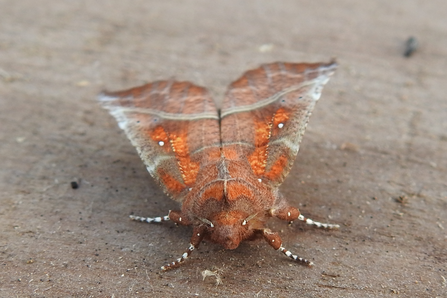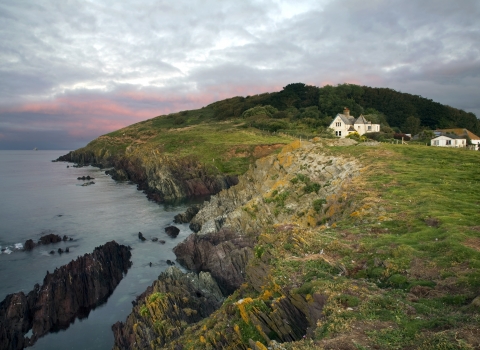What’s it like here in winter? Well, noisy! You weren’t expecting that, were you? Don’t worry, its good natural noises – crashing waves, howling winds and boisterous birds. Yet, despite the island looking naked with its lush summer vegetation long gone, the reserve seems more alive than ever!
The teeny weeny stuff
You never know what you’ll find in the woodshed, right? Don’t worry this isn’t a horror story…. but lurking within the log piles we found, not beasts but beauties! We had accidently uncovered Herald moths. Their warm, orange and funky white markings make them pretty easy to ID. It’s a moth that is often seen flying late in the year but the ones we spotted were cosily overwintering in the shelter of the woodshed. This moth also has a penchant for spending colder moths in caves. I’ve never spotted one underground but in 2010, the German Speleological Federation named it Cave Animal of the Year! What a wunderbar thing to herald, ja?






